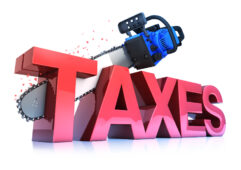For the last 4 decades, mutual funds have been a favorite investment tool of average American investors. But they offer few tax breaks.
During the last few years, a brand new variety of fund has become accessible to traders seeking managed portfolios, lower costs and tax breaks. These investments, called exchange-traded funds (ETFs), trade on the major stock exchanges and behave much like stocks, with the exception that they provide professional management as in traditional funds. More than 1000 different exchange-traded funds at the moment are available, and the number is continuing to grow.
ETFs may be useful for investors trying to seize capital losses at year-end. As a hypothetical example, presume that you have stock in a certain health care business. The stock price has dropped precipitously since you got in, however you feel this is only temporary. Nevertheless, you want to realize a capital loss on the stock while it is trading in its present range. But you should watch out for the 'wash sale' rule as determined by the IRS prohibiting the repurchase of any stock sold for a loss for a minimum of 31 days following the sale. Therefore, an alternative might be to sell the stock, capture the los for tax purposes, and buy shares of a corresponding exchange-traded health care fund. Even when this fund actually has your previous stock as one of its core holdings, it is still considered an independent security by the IRS. Therefore the wash sale rules will not apply - a nice tax break. Moreover, you now have diversification within the health care field, while retaining exactly the same liquidity as before. The proliferation of exchange-traded funds now enables you to realize a loss with one fund then jump into another in case you want.
(note--you would never want to buy a traditional mutual fund at year-end as you could buy into the undistributed gains and make your tax situation far worse).
And when should you sell a stock and purchase the ETF representing the asset class to which the stock belongs? The obvious solution is once you have capital gains or any other income and taking a loss would help shelter that income. A capital loss may be declared against the quantity of any gain obtained, and also $3,000 of ordinary income per year.
One other tax break that comes together with ETFs is usually low turnover (low rates of buying and selling within the fund). Because most ETFs aim to replicate an index instead of beat it, the ETF does not need to do lots of purchasing and selling as many actively managed mutual funds do. A small quantity of purchasing and selling produces low capital gains within the fund - another good tax break of ETFs.
You Pay More Taxes Than Necessary
And we guarantee your CPA has never told you The problem with paying taxes is that most people overpay. So if you are concerned about having enough in retirement, you must stop overpaying taxes. I know you think your CPA takes care of this for you. WRONG. I AM a CPA (retired) and I can tell you that 90% of CPAs do nothing more than enter your information into the little boxes on the tax return but NEVER tell you how to pay less next year. Why? Many of them simply do not know what we can show you. In ten minutes.Get Your Copy Now - 6 Ways to Cut Retirement Taxes






THanks for the article Frank!
I am retiring ina few years and this helps me a lot! 🙂
Victor